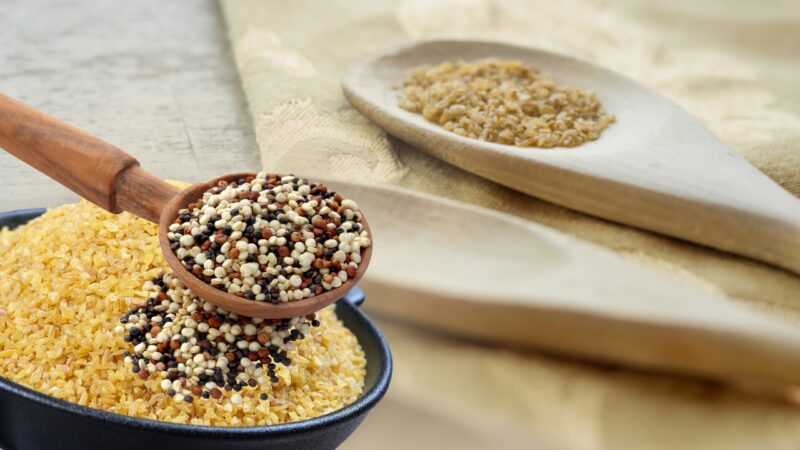Bulgur wheat is a whole grain made from cracked wheat, often found in Middle Eastern cuisine. It’s known for its nutty flavor, chewy texture, and high nutritional value.
Many are familiar with bulgur as a key ingredient in dishes like tabbouleh, where it provides a satisfying and hearty base. One of my favorite dishes featuring bulgur wheat is kısır, a vegan Turkish salad made with finely ground bulgur, fresh vegetables, and aromatic herbs, creating a delightful and refreshing meal.
But what about those who cannot consume bulgur wheat, or those who prefer to explore other grain alternatives? Whether due to dietary restrictions, allergies, or simply a desire for culinary diversity, people often seek substitutes for this popular grain. Ill take you into the wide variety of alternative options, shedding light on their culinary applications, cooking methods, and benefits.
Top Alternatives
These alternatives each provide unique characteristics and culinary possibilities, offering an exciting array of choices for those looking to expand their grain repertoire. Whether you’re aiming for protein richness, low carb content, robust flavor, or gluten-free alternatives, these options invite you to explore, experiment, and enjoy.
Quinoa
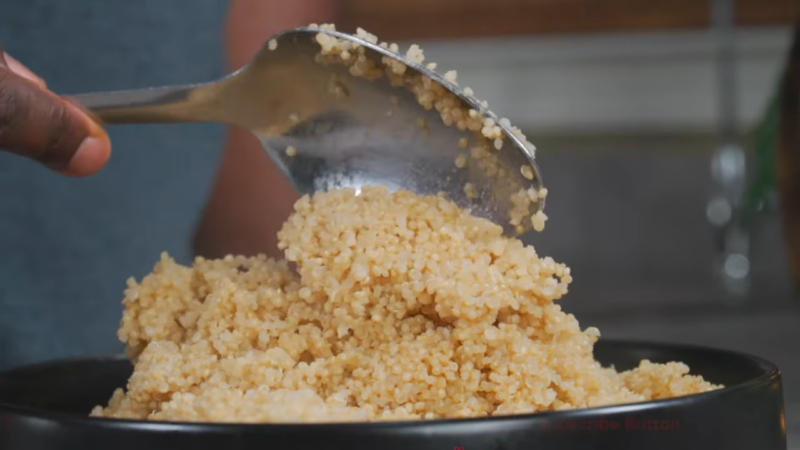
A grain crop grown primarily for its edible seeds, is renowned for being a complete protein source. Unlike other grains, it contains all nine essential amino acids, making it an attractive choice for health enthusiasts.
If you’ve ever wanted to try something new in your homemade salad, why not replace bulgur with quinoa? I’ve often done so in my own favorite grain salad, and it adds a delightful crunchiness to the dish.
Cooking quinoa requires a 2:1 water-to-quinoa ratio and typically takes about 15 minutes, slightly shorter than bulgur wheat.
| Nutrient | Amount per 100g |
|---|---|
| Calories | 120 |
| Protein | 4.1g |
| Fat | 1.9g |
| Carbohydrates | 21g |
| Fiber | 2.8g |
| Iron | 1.5mg |
Cauliflower Rice
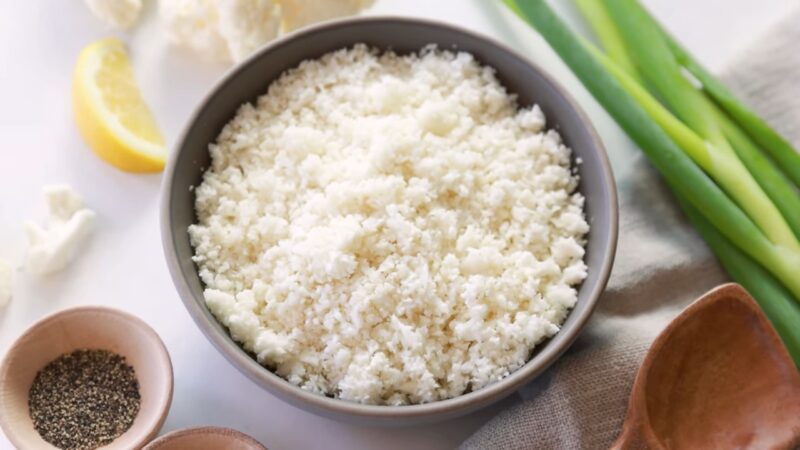
For those looking to reduce their carbohydrate intake, cauliflower rice offers an excellent low-carb alternative to bulgur wheat.
Made by grating cauliflower into small, rice-sized pieces, it’s a versatile base that I enjoy using in my vegan stir-fry dishes. Preparing cauliflower rice involves sautéing it with a touch of olive oil and seasoning as desired.
It cooks faster than bulgur, usually in just 5-8 minutes, and its mild flavor makes it a fantastic canvas for various spices and herbs.
| Nutrient | Amount per 100g |
|---|---|
| Calories | 40 |
| Protein | 1.8g |
| Fat | 2.4g |
| Carbohydrates | 4.0g |
| Fiber | 2.6g |
| Iron | 0.3mg |
Farro
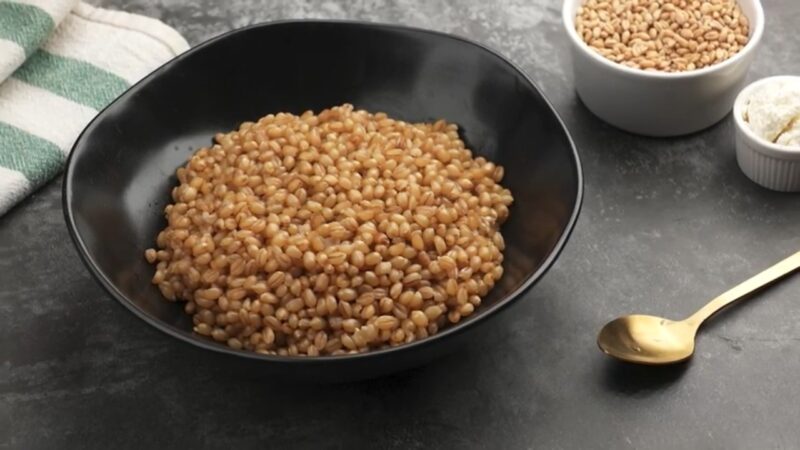
An ancient grain that has been a staple in Italian cuisine for centuries. It possesses a chewy texture and a robust, nutty flavor, making it a suitable replacement for bulgur in soups and salads.
I love adding farro to my minestrone soup; it adds a satisfying texture that is both comforting and nourishing.
Cooking farro usually involves a 3:1 water-to-farro ratio and a simmering time of about 30 minutes, slightly longer than that of bulgur wheat.
| Nutrient | Amount per 100g |
|---|---|
| Calories | 170 |
| Protein | 5g |
| Fat | 1g |
| Carbohydrates | 37g |
| Fiber | 5g |
| Iron | 2mg |
Millet
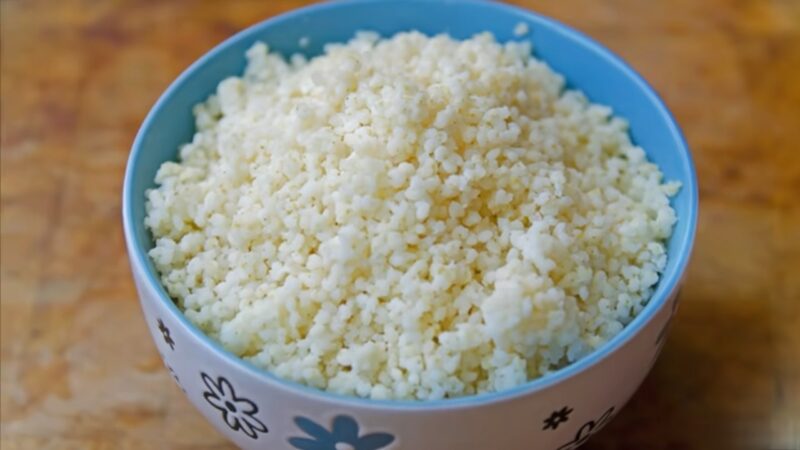
A small, round grain known for being gluten-free, making it a friendly option for those with gluten sensitivities. This grain can be found in various colors, including white, gray, yellow, and red.
Millet’s mild flavor and fluffy texture have led me to experiment with it in pilafs, where it adds a unique touch. The subtle taste allows it to seamlessly blend into any dish, offering a delightful alternative to bulgur wheat.
It’s best cooked with a 2.5:1 water-to-millet ratio, and its quick cooking time of 15-20 minutes means it’s ready in a jiffy.
| Nutrient | Amount per 100g |
|---|---|
| Calories | 118 |
| Protein | 3.5g |
| Fat | 1g |
| Carbohydrates | 23g |
| Fiber | 1.3g |
| Iron | 0.6mg |
Brown Rice
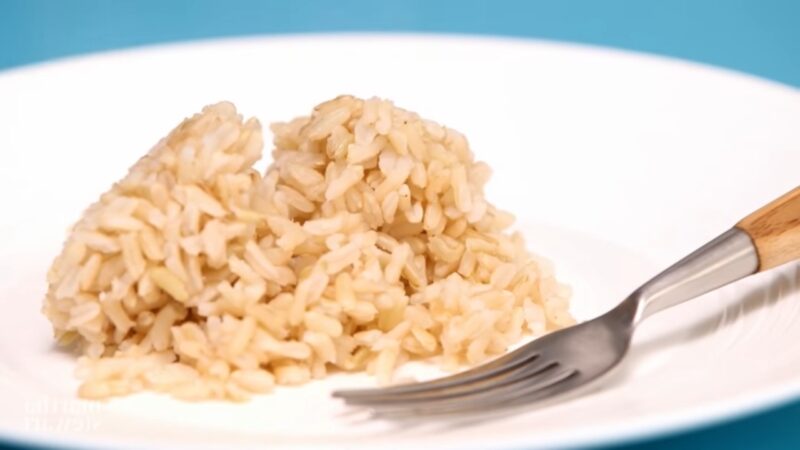
Brown rice is more than just a side dish. With its chewy texture and rich, nutty flavor, it can be the star of many meals.
Why not try it in place of bulgur in your favorite stuffed vegetable recipes? I recently made some vegan stuffed bell peppers with brown rice, and they were a hit!
Unlike white rice, the brown variety retains the bran and germ, offering more fiber and nutrients. Cooking brown rice takes a bit of patience, with a 45-minute simmering time using a 2:1 water-to-rice ratio, but the results are worth the wait.
| Nutrient | Amount per 100g |
|---|---|
| Calories | 111 |
| Protein | 2.6g |
| Fat | 0.9g |
| Carbohydrates | 23g |
| Fiber | 1.8g |
| Iron | 0.4mg |
Couscous
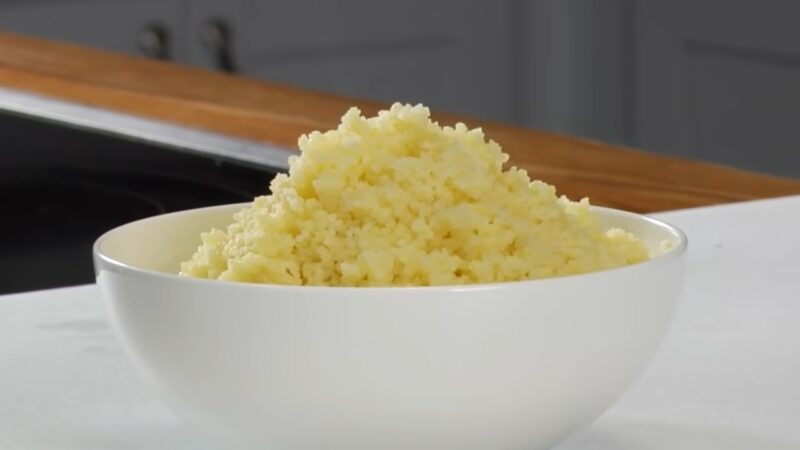
Have you ever explored the world of couscous? This North African staple, made of tiny wheat granules, can be ready in just 5 minutes.
Its regional variations, such as Moroccan or Israeli couscous, offer different textures and sizes. The next time you’re making a quick lunch, substitute couscous for bulgur wheat.
I’ve done this in a lemony couscous salad, and the flavor and texture were sublime. With a 1.5:1 water-to-couscous ratio, it’s an effortless change that adds an exotic flair to any meal.
| Nutrient | Amount per 100g |
|---|---|
| Calories | 112 |
| Protein | 3.8g |
| Fat | 0.2g |
| Carbohydrates | 23g |
| Fiber | 1.4g |
| Iron | 0.3mg |
Pro Tip: Fluff couscous with a fork after cooking to separate the grains and give it a light and airy texture.
FAQ
Can I use bulgur wheat interchangeably with all substitutes?
While most of the substitutes can be used in similar culinary applications as bulgur wheat, there might be differences in texture, flavor, and cooking times. I recommend experimenting to find the best match for your particular recipe.
Are these substitutes suitable for gluten-free diets?
Millet and quinoa are naturally gluten-free, while other grains like farro and couscous contain gluten. Cauliflower rice is another gluten-free option. Always check labels to ensure no cross-contamination if you require strictly gluten-free products.
What are the nutritional differences between bulgur wheat and its substitutes?
Bulgur wheat is rich in fiber and protein, but each substitute offers unique nutritional benefits. Quinoa is a complete protein, millet is gluten-free, brown rice offers a high fiber content, and cauliflower rice is low in carbs. Depending on your dietary needs, you can choose the alternative that best aligns with your nutritional goals.
Conclusion
In the world of grains, there’s a rich variety awaiting exploration. From the nutty goodness of quinoa and the ancient allure of farro to the healthful essence of brown rice and the low-carb simplicity of cauliflower rice, the alternatives to bulgur wheat are both plentiful and exciting.
Whether you are seeking to meet specific dietary requirements or just eager to experiment with new textures and flavors, these substitutes offer versatile and delightful options. So don’t hesitate to take a culinary leap and enjoy these grains in your favorite vegan dishes.

